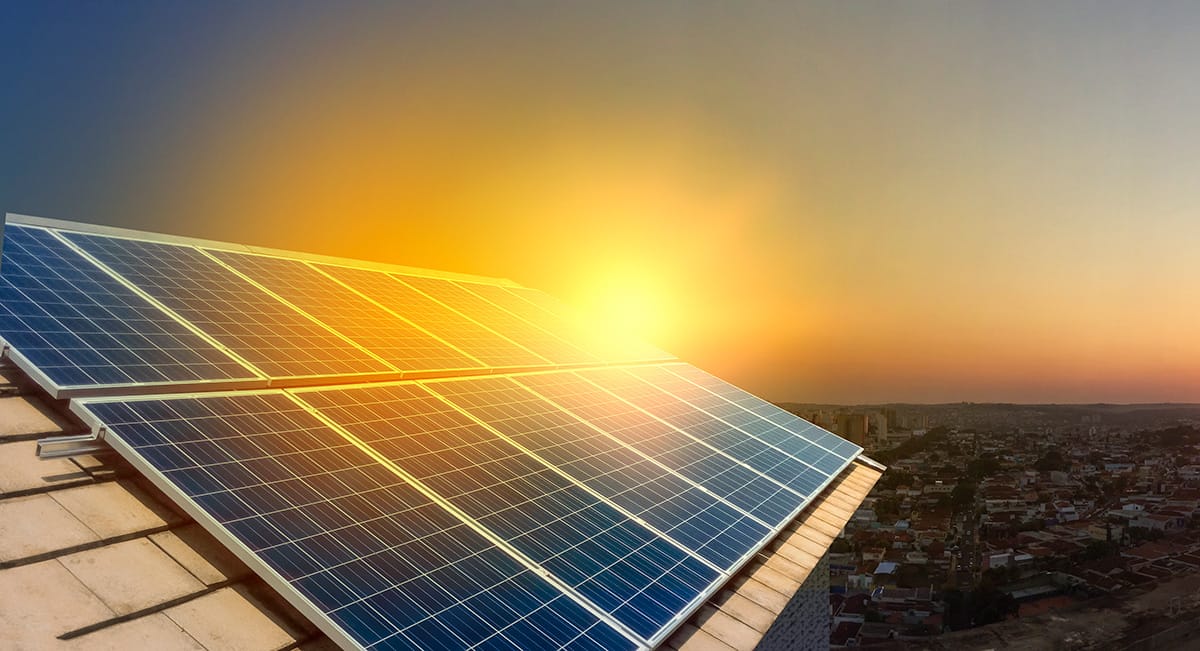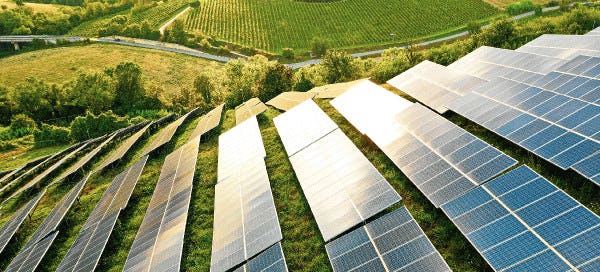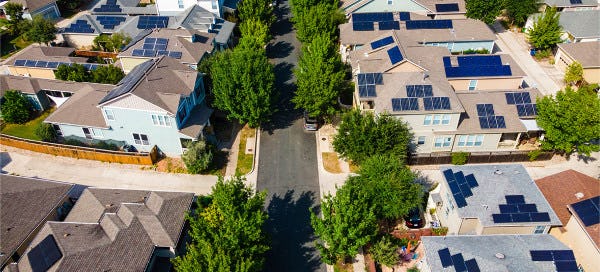The Complete Guide to Solar Power in Texas
As one of the sunniest states in the nation, the Lone Star State is a great place to plug into that great power source in the sky. Solar power brings a number of benefits, from significant cost savings and energy independence to positive impact on the environment. As technology continues to advance and incentives become more widely accessible, the future of solar energy in Texas looks bright. In this article, we’ll explore how you can properly plan, install, and maintain solar systems to harness the sun’s energy for years to come.
How Do Solar Panels Work?
It’s all about photovoltaic (PV) technology: converting sunlight directly into electricity through a series of solar cells made primarily from silicon. When sunlight strikes the solar cells, it excites electrons, creating an electric current. This process involves several stages:
Photon Absorption: Sunlight is absorbed by the solar panels
Electron Excitation: The absorbed energy frees electrons from their atomic bonds
Current Generation: The movement of these freed electrons generates direct current (DC) electricity
Inversion: An inverter converts the DC electricity into alternating current (AC), which is used by Texas households.
Types of Solar Panels Available in Texas
There are three primary types of solar panels:
Monocrystalline Panels: High efficiency and sleek in design, these panels are made from single-crystal silicon. They are typically more expensive, but are great for limited roof space due to their high power output.
Polycrystalline Panels: Made from multiple silicon crystals, these panels are less efficient but they’re also less expensive, bringing a budget-friendly option without sacrificing too much efficiency.
Thin-Film Panels: These panels are lightweight and flexible, making them easier to install in challenging applications. However, they generally need more space and operate at a lower efficiency.
For homeowners here in Texas, monocrystalline panels are often the best choice thanks to their higher efficiency and superior performance in hot climates.
Benefits of Installing Solar Panels in Texas
Cost Savings: With rising electricity costs, solar panels can significantly reduce monthly energy bills. Many Texas homeowners see savings of 50% or more on their electricity bills.
Energy Independence: Solar power can reduce reliance on the power grid, which is an advantage during peak demand periods or an energy crisis.
Job Creation: The solar industry is growing rapidly in Texas, providing job opportunities in installation, maintenance, and manufacturing.
Environmental Impact: Solar power is a clean, renewable energy source that reduces greenhouse gas emissions, contributing to a healthier environment.
Environmental Benefits Compared to Traditional Energy Sources
Solar power emits no harmful pollutants during operation, unlike fossil fuels, which release carbon dioxide and other harmful substances. Transitioning to solar energy helps combat climate change, reduce air pollution, and even conserve water resources.
The Cost of Solar Power
Installation Costs
The cost to install solar panels in Texas can range from $15,000 to $30,000 for a typical residential system, depending on the size, type of panels, and installation. However, this can vary based on location, available incentives, and financing options.
Savings on Electricity Bills
Over the course of a solar array’s lifespan (typically 25 years), homeowners can expect to save between $20,000 and $30,000, offseting installation costs.
Return on Investment (ROI)
Most homeowners in Texas can see a return on their investment within 5 to 7 years. After this period, the energy produced is basically free, bringing long-term financial benefits.
Increased Home Value
Studies show that homes with solar panels sell for 4% to 6% more than comparable homes without them. This increased value is attractive to buyers, particularly in areas with high energy costs.

Extreme Weather and Insurance
Impact of Extreme Weather
Our state is known for its extreme weather, including hurricanes and hailstorms. Most solar panels are designed to withstand severe conditions, having been tested for high winds and hail impact. Look for panels with high ratings for durability.
Roof Warranty and Insurance
Installing solar panels can affect your roof warranty, so it’s important to consult with your roofing contractor before doing so. Generally, reputable solar installers will ensure that the installation complies with roof warranty terms. Also, many home insurance policies cover solar panels, but it’s a good idea to inform your insurer when installing them, to ensure adequate coverage.
Solar Panel Efficiency
Our climate is highly beneficial for solar energy production, with many parts of the state receiving more than 200 sunny days per year. However, note that extremely high temperatures can slightly reduce panel efficiency.
Maximizing Efficiency
Regular maintenance, keeping panels clean, and choosing the right installation angle can enhance solar panel efficiency. You can even monitor system performance using solar monitoring tools recommended by your installer, to ensure optimal output.
Roof Orientation and Tilt
To maximize efficiency, solar panels should ideally be installed on south-facing roofs with a tilt angle of around 30 degrees. This setup will capture the most sunlight throughout the day.
Shading Effects
Trees, buildings, or other structures casting shade can significantly reduce solar panel efficiency. Be sure to assess shading conditions before paying for installation.
Energy Production and Usage
Solar panels easily integrate with most existing home energy systems. Many homeowners go a step farther, combining solar with on-site batteries for energy storage.
Going Off-Grid
While it is possible to go completely off of the grid with a solar system, it requires careful planning and substantial battery storage to ensure energy availability during cloudy days or at night.
Net Metering in Texas
Texas does not have a statewide net metering policy, but many local utilities offer net metering programs that let homeowners to sell excess energy back to the grid, bringing additional savings and a better return on the investment of installation.
Incentives and Financing
You can take advantage of the Federal Investment Tax Credit (ITC), which allows you to deduct 30% of the installation costs from your federal taxes. Some local utilities may offer rebates or incentives, so it's wise to check with your Retail Electric Provider (REP). See a full list of Texas Solar Incentives here.
In addition to the ITC, solar installations may qualify for property tax exemptions, allowing homeowners to avoid increased property taxes from added solar system value.
Financing Options
Paying cash up front is the most economical, as it gives you the lowest overall cost and maximizes your long-term return on investment. However, financing options for solar installations in Texas include:
Taking out a solar loan. A solar loan lets you buy the solar panel system outright, then make monthly payments on the loan. The average payback period for a solar loan is around 10 years.
Signing a solar lease. Also called a power purchase agreement (PPA), a solar lease lets you rent solar panels from a third-party company. Bear in mind that solar leases are not eligible for the federal tax credit.
Learn more about solar panel financing by reading the following articles:
Government and Non-Profit Assistance
Organizations like the Texas State Energy Conservation Office offer resources and information on solar programs, including information on assistance for low-income families.
Rhythm Energy’s Solar Buyback Plan
Want to make the most of your investment in solar panels and get bill credits for the excess power being generated from them? With our PowerShift Solar Buyback 12, Texas customers with residential solar arrays less than 20 kilowatts in capacity are eligible. So you can enjoy the reliability of the grid while never compromising on your commitment to solar energy.
Installation Process and Requirements
The installation process typically takes 1 to 3 days, depending on the size and complexity of your solar system. Note that planning and permitting can add additional days (or even weeks) to your timeline.
DIY Installation
While some may consider a DIY solar installation, it's recommended to hire a professional to ensure safety, compliance, and optimal system performance.
Choosing a Solar Installer
Selecting a reputable installer is crucial. Homeowners should research company reputation, warranties, and service offerings before making a decision. For hints and tips on choosing an installer, read our article on Solar Energy Companies in Texas.
Determining System Size
You can assess your energy needs by reviewing past electricity bills and consulting with solar professionals, who can perform a detailed analysis.
Local Regulations and Building Codes
Texas has specific regulations and building codes that govern solar installations. It's key to ensure that you comply with these regulations, to avoid potential issues.
Maintenance and Lifespan
Once your system is up and running, you will be able to monitor solar system performance using apps and online dashboards recommended by your installer, allowing for easy tracking of energy production and efficiency.
Lifespan and Maintenance
Most solar panels come with warranties ranging from 25 to 30 years. Major maintenance issues are rare, but routine maintenance includes cleaning panels and checking electrical connections.
Handling Repairs
In the event of damage or system issues, contact your installer or a qualified technician, to ensure proper service and that warranties are protected.
The Future of Solar Power in Texas
The future of solar power in Texas looks promising, with continued growth that positions us to become a national leader in solar energy, just as we already are in wind power! Our state is expected to install a significant amount of solar power, including 24 gigawatts of net summer capacity in 2024 and 2025. Meanwhile, falling costs are making solar more competitive with fossil fuels as the state becomes a hotbed for climate change startups, such as Massachusetts-based Greentown Labs, which recently selected Houston for their second location.
We Love the Sun
At Rhythm Energy, we love solar power for the many environmental, economic, and employment benefits it brings. When you sign up with Rhythm Energy, you can select from our solar plans, which will ensure that 100% of your power comes from solar sources right here in our state, with no solar panels required. But with any Rhythm Energy plan, you can rest assured that all of our energy comes from renewable resources – always and forever.




